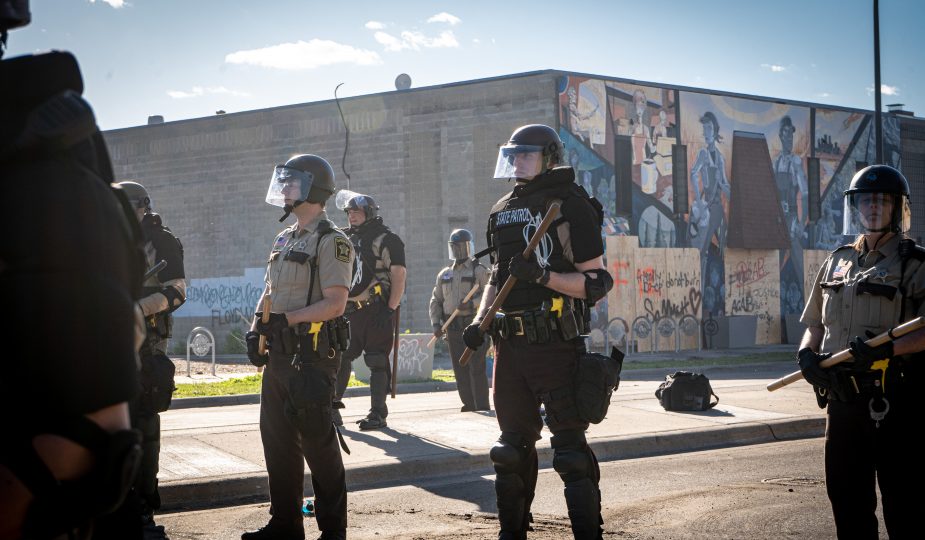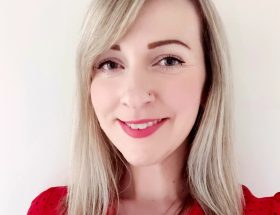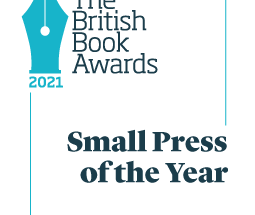“May you live in interesting times.” Falsely attributed to Confucius by Sir Austen Chamberlain, 1936, maybe. This false attribution may be yet one more example of cultural misappropriation and unquestioned white supremacy. The quote is apt.
Minneapolis is going down a road now that was created by many, many activists in a long history of activism. My city council voted unanimously on Friday, June 12th, to abolish our police department and replace it with a community-led public safety system. The mayor of Minneapolis, Jacob Frey, had hoped to reform the police department, but this vote of the city council says no. We will no longer try to work with the police of Minneapolis, who have proven themselves time and again to be opposed to reform. We are dedicated in Minneapolis to spending the next year in negotiations with one another, in discussions that will lead to, according to the resolution, “long-term transformative change, centering the voices of those most impacted by community violence and police violence… the voices of Black people, American Indian people, people of color, immigrants, victims of harm, and other stakeholders who have been historically marginalized or under-served by our present system.”
I moved to Minneapolis a year ago, and I took an apartment across the street from the police station because, as a white woman, it felt safe to me. I had no idea that, a year later, I would be in favor of this resolution of my city council to abolish the police station.
But here’s what happened: I became increasingly aware that my safety as a white woman is at the expense of Black, Indigenous, and People of Color. This concept does resonate with me, as the mother of children of color, but only in the past two weeks, as we have activated our city in response to the death of Mr. George Floyd, have I been able to begin to articulate this concept more clearly. Only in the past week have I embraced the idea of abolishing the police department in favor of a new model of public safety.
I lived through another interesting time, and that was the Arab Spring. I was in Morocco then, and the people were fighting for changes. I was there when the king called for a vote to change the constitution to allow for power sharing in the government and greater recognition of indigenous cultures. I wrote a book during that time that became Flying Goats in Agadir. It isn’t easy to write about revolutionary changes as they are happening because changes are rapid. What one writes cannot be held for long because everything changes in the next moment. I believe documentary film is a better venue for capturing a revolution than writing, unless one is a journalist and capturing moments as they go. For a novelist, the revolution is too fast-moving and shifting.
And yet, I find myself in the midst of a revolution in Minneapolis. It is exhilarating. It is terrifying. It is emotional. We move from moment to moment in a situation of change. There is no way to predict the next moment or the next day, but there are ways to prepare and organize and be ready.
Protests in Minneapolis
Our protests are varied in Minneapolis. There are marches at certain points around the city – near Cup Foods where Mr. Floyd was murdered, near the hospital where a false autopsy was written, near the police union hall, where the union leader belongs to white supremacist groups, on the highways, near buildings all around the city that have been burned. There are marches with signs in the air, and there are marches with brooms and dustpans.
Marching isn’t our only form of protest. There are marches, vigils, visits to homes of elected officials, meetings in parks and online, plywood art, yard signs, sculptures, murals. Our city is full of artists, and they are contributing to the protest in many ways.
~ Kirstin Ruth Bratt
There is a continual vigil at the corner where Mr. Floyd was murdered. This vigil is growing and changing by the day. It is beautiful and life-affirming. Traffic has been blocked with the assistance of the city. This is a sacred space with many tributes. In the center of the intersection, a sculpture has been created of a fist raised to the sky. This fist is circled with flowers, shoes, a table and chairs. People come to the circle to pray, hold space, meditate. Often there is music, food, a speaker talking to the crowds. Sometimes a particular group will gather there for a tribute – dancers, clergy, musicians. When you pass into the space, you will likely be greeted by a community member, and this person will help you prepare to enter the space by sanitizing hands and having the appropriate mask for safety.
In a park nearby is a tribute to many lives taken by police violence. It is a vast outdoor sculpture of headstones, each dedicated with that person’s name, dates of birth and death.
Around the city, windows of businesses are covered in plywood, and these have become canvases for many types of tribute. Sometimes a hastily-sprayed message, but other times a very thoughtful work of art. Many business owners have written messages on these plywood covers that speak directly to their fears: “Children live upstairs” or “Please don’t burn.” Others write messages to describe their business: “Black-owned” or “Local business.” Others show solidarity with the protests: “Black Lives Matter” or “Justice for George Floyd.”
The debate in my city now is clearly focused on public safety. What do we want public safety to look like in our city? We see that we have an opportunity to shape public safety reforms for other cities like ours. Our police have not served us equitably, and they refuse to reform themselves in a meaningful way, and so we are looking at ways to change our public safety model.
Even though I am a proud union member myself and very supportive of unions, I have come to understand that the police union in Minneapolis is showing a distinct failure to protect public safety, from killing handcuffed and unarmed citizens to barricading the police departments against all of us. As a white woman, I realize that I have always benefitted from having a police department. I have called the police for my safety. But I have been forced, through these incredible movements, including Black Lives Matter and other related movements, to re-evaluate my position. Public safety could be different – it could be something we share in our city. We could have public centers where we all prepare our minds and bodies for safety, where we can get food, transportation passes, mental and physical health care, wellness opportunities. We could start to use physical exercise and outdoor gardening as part of our public safety plan. There are many ways to consider public safety that can be empowering and uplifting for all of us.
Baby steps that I’m taking toward liberation
I’ve started writing back to Facebook posts that I would prefer to ignore.
Yesterday, one of my high school classmates wrote that George Floyd shouldn’t have tried to pay with a counterfeit bill, and this is something I would usually call ignorant and ignore, but this time I decided to answer. I asked about her goals: What is your goal here? Are you trying to justify a murder? And then I wrote a story about my own experience with a counterfeit $20. I had one in my wallet, and I didn’t know. I pulled it out to pay for a meal, and the server pointed out to me that it was a counterfeit bill. I was surprised, and we laughed together, and I paid another way. No one called the police on me, and no one tried to kill me. This, I explained to my classmate, is what white privilege means.
A few minutes later, she had erased my comment.
Did I waste my time? Maybe. My time is valuable to me. But I know she read the comment, and it bothered her a little, enough to erase it. I imagine she ruminates a little on what I wrote, and maybe there’s a little crack in her armor somewhere that starts to open.
If I’m walking outside, and I see a police officer engaging with a citizen, especially a person of color, I stop and bear witness. I get a look from the officer usually, a look of annoyance, and I get a look from the citizen, too, something curious, like “What is she looking at?” But I let them wonder, and I stay, and I keep watching until that officer is back in the car and leaving the scene. It’s something I can do as a white woman, stay close and uncomfortable, witnessing for the citizen who may need me. I’ve never taken out a phone to record, but I’m ready to do so.
One particular march: May 30th, 2020, Minneapolis, Minnesota
I was on my daily walk, on the phone with my mother, checking in to make sure that her quarantine isn’t too lonely for her, and I saw that I was about to merge with an enormous protest. I pulled my face mask out of my sports bra, turned off my podcast, and put my headphones around my neck. I merged.
I looked around me and realized that I’ve become the older woman at the protest, surrounded by much younger people.
I remember a feeling from my 20s. I would be with my friends at a protest, and there would be an older woman there, and I would think about how long, how many years, this woman had been protesting, and how much, if anything, had changed for her.
I know the answer now – it depends on how you measure things. It’s easy to say that nothing has changed in all these years of protesting, and it’s easy to say that a lot has changed.
I merged with the 20-somethings. The crowd wasn’t crowded, not really. It was as if these young people had spent years in training for this protest. Everyone was giving me the space they knew I needed. I wanted my two meters of space, and I had it, and yet I didn’t feel alone. The young people had extra water bottles to share, and they had big containers of hand sanitizer that they were willing to squirt out for anyone who asked. They had hastily made signs, nothing glamorous like the signs at the women’s marches in 2017, just cardboard and markers. We were chanting, “One down, three to go,” which is exactly my feeling, and “No justice, no peace, prosecute the police.”
We walked for a few blocks toward the University of Minnesota, and then I realized that we were going toward the ramp to the interstate. Around me, others were realizing it, too, and the energy crackled around. A shout of excitement went into the air. “We’re doing this?” and “Hell, yeah.” The exit ramp is long and sloping toward the interstate, and most of us walked straight down through the long grass instead, a steep incline.
The interstate, usually busy with fast cars and big trucks, was empty for us. I don’t know how this happened, but there was no threat from vehicles. Overhead were pedestrian bridges, and we held our arms up to the many people up above us. In the opposing lane, traffic was moving at a steady pace, and some of those vehicles were tooting their approval and cheering from their open windows.
We walked north for about a kilometer, and then we knelt down in big concentric circles. We stayed on our knees for eight minutes and 46 seconds. It was a long time for my 52-year-old knee, but imagine: a police officer put his knee on the neck of a citizen for that length of time. That is what happened here in Minneapolis. That is why I was in the middle of an interstate on one knee.
We walked back toward the Washington Avenue exit, south, before we left the highway. As we walked off of the highway, I started thinking of how Heather Heyer died in Charlottesville, by a car driven intentionally into a crowd. This crowd of young people would be vulnerable now as we left the interstate and as impatient drivers would be taking the road back. I slowed my pace up the ramp, filming the vehicles in case we needed to trace a license number later. There were a few vehicles stopped on the right lanes of the interstate to protect us. Only one driver was disrespectful of the crowd, driving fast and gunning his engine, but he stayed far to the left lane as we exited from the right. The other drivers moved slowly and respectfully, some expressing their approval from open windows as they continued on.
Once we reached Washington Avenue, we walked toward the Vikings stadium and the Hennepin County Medical Center where Mr. Floyd’s body was taken after his murder. I began to consider my time. I still had to walk home, and I wanted to be in my house by the 8pm curfew. It was 6:30, and I had been marching for over an hour. I stayed with the march until we had taken a knee for a third time. I started to text friends to see if they were in the crowd somewhere, but they all seemed a bit surprised to hear that I was not safely tucked into my quarantine.
The mood became somber. No more shouting slogans. It was thousands of people, silent, taking a knee between a Viking ship and a hospital. It was time for all of us to decide: am I going to stay late and risk arrest for violating curfew? Am I going to go home and worry all night about what is happening outside?
The crowd seemed to divide in half at this point, as many started to walk away while others started to walk southward together toward the sacred site of Mr. Floyd’s death, where people are making speeches, where piles of flowers are gathering, where murals are being painted, where “I can’t breathe” is chalked into the intersections and sprayed on plywood.
I turned to the north, toward home, following people with their signs, people who continued to hold their signs up to passing cars, some drivers waving back. I thought about my city, Minneapolis. How I love it.
This time it will be different, we say. We always feel this way – the energy on the street, the determination and passion in the protest. But the protest is only the start, only the wake-up call. When the protest is over, the real work must begin. We must keep waking ourselves up. Every day.
Look at us: we can’t have public health care because we live in a racist structure, and the structure can’t bend to benefit us. We can’t have universal voting. We can’t have universal public transportation. We can’t have universal public mental health care. We’re stuck here with the same old segregation in our neighborhoods and hospitals and schools, and it’s getting worse all the time. The myth that “time heals all wounds” is part of the problem. It doesn’t.
Tonight I can smell the fires, and I’m afraid for my neighbors. Tomorrow, we’ll put on our gloves and our masks, and we’ll pick up our brooms and our dustpans. We’ll go outside together to clean up the mess. It’s a mess we’ll be cleaning up for weeks and months and years to come.
And we can’t just patch it up, either. We have to make fundamental changes now. White people will need to deconstruct privilege, look it in the face, and let it go. Black, Indigenous, and People of Color have only asked us to be better citizens and make our communities better for everyone.
Marches aren’t about me feeling better about myself. They’re about activating the work that I need to do – the small bits of work that add together with the small bits of work of others and make a large body of work. This is what it means to be a team player – we’re all in the work together.
Kirstin Ruth Bratt is a professor at St. Cloud State University in Minnesota. She previously taught at Arizona Western College, Penn State University, and Georgia State University. She loves her sweet and thoughtful children, traveling abroad, political campaigns, passionate readers and writers, the theater of complex and interesting playwrights, the music of good listeners. Her work has appeared in over 80 academic and creative journals; her publications include an edited book of essays with the University of Chicago Press and a book of poetry with RedBird Chapbooks. Flying Goats in Agadir is her first novel.




